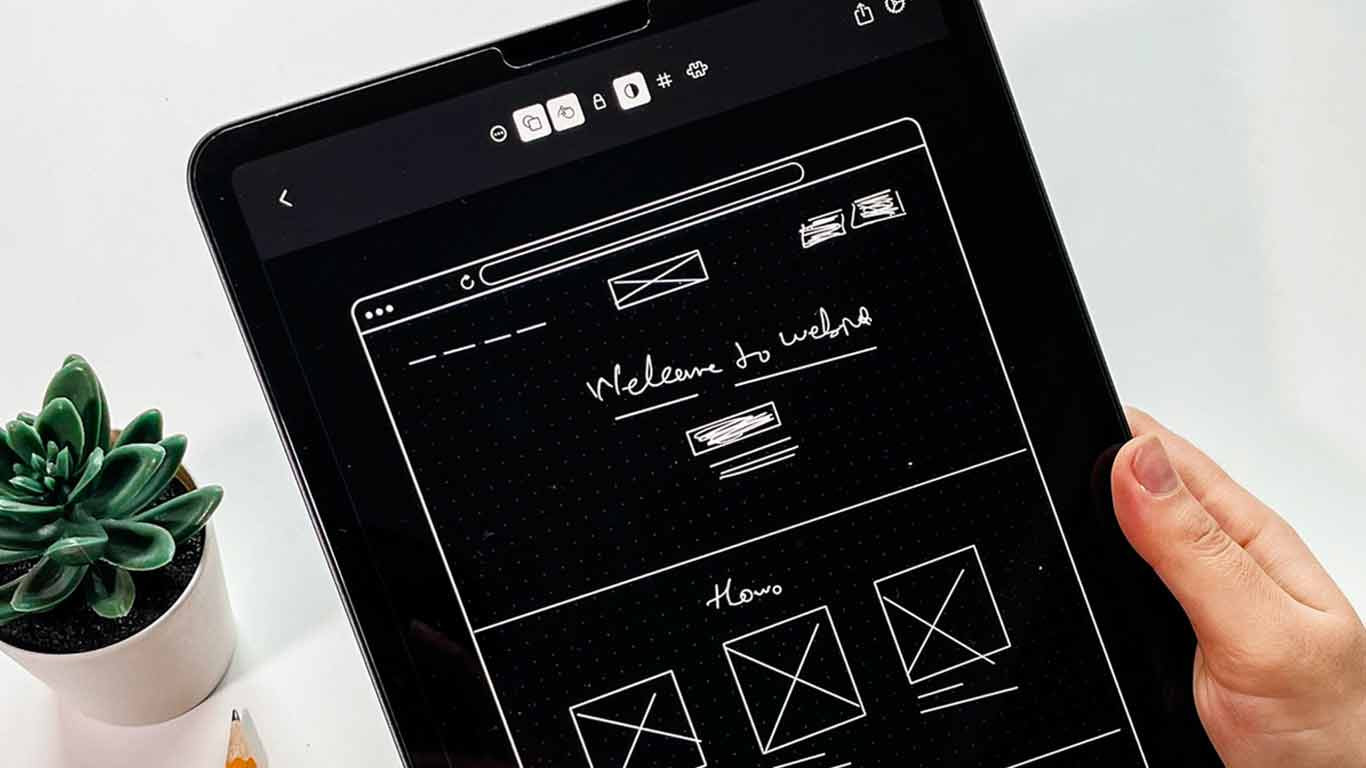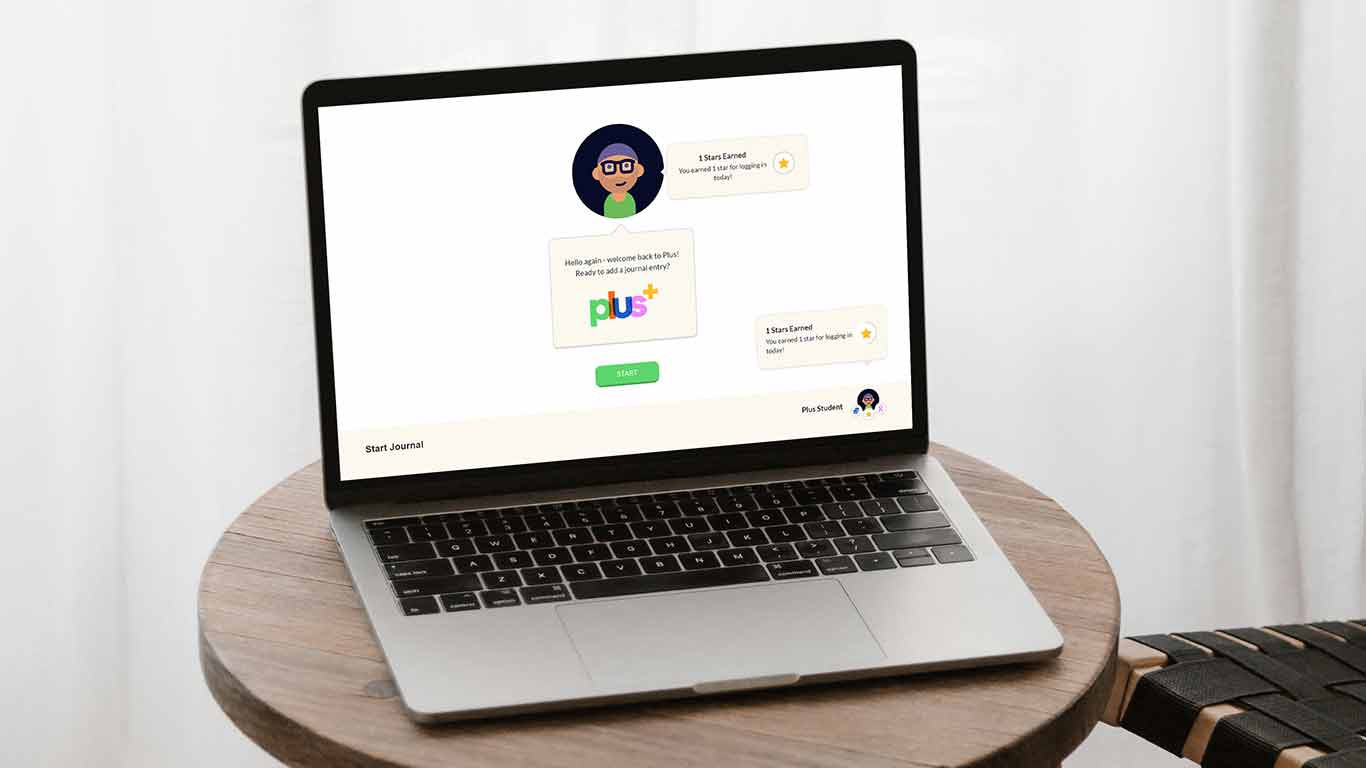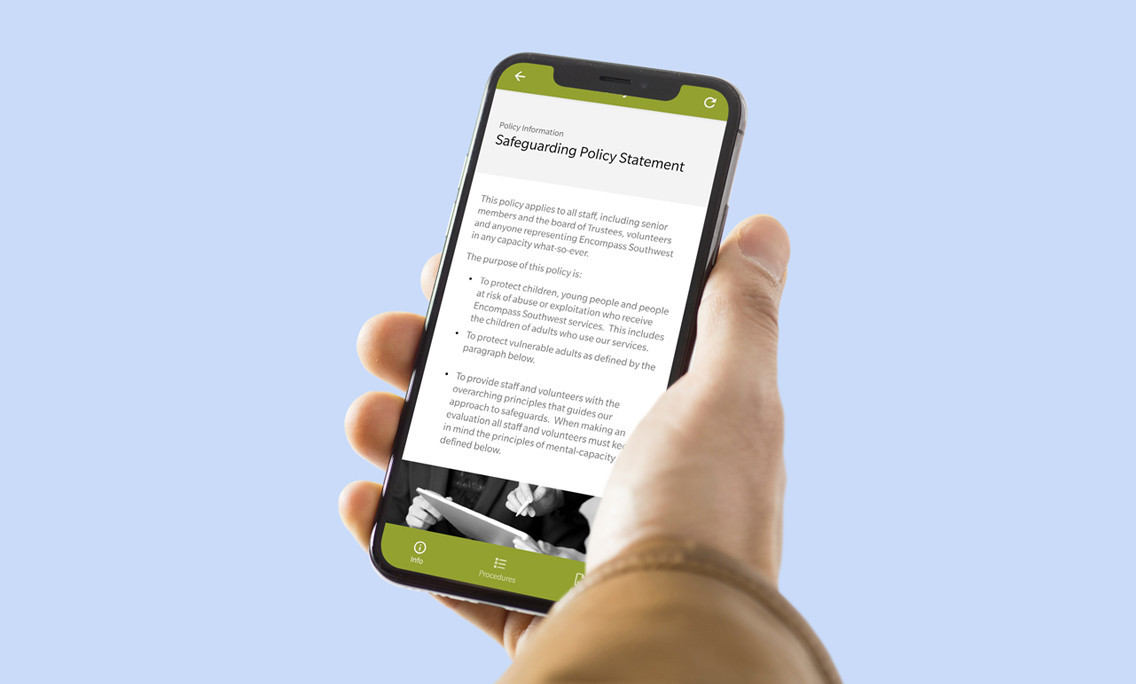Strategy
July 2023
Understanding The Key Differences Between UX & UI In App Development

As a mobile app development agency, we're often asked by businesses about the intricacies and significance of user experience (UX) and user interface (UI) design in mobile app development. We understand that these are more than just industry buzzwords - they are vital aspects that can make or break an app's success in today's competitive marketplace.
Many confuse UX and UI or treat them as interchangeable concepts. However, while closely related and interconnected, these elements serve distinct roles in app development. But in simple terms, UI is how things look, and UX is how things work.
In this article we aim to explore these two critical aspects of app design, delving into why both UX and UI designs are necessary for a mobile app and how they contribute significantly to its success. Furthermore, we’ll provide practical guidance on how you can ensure great UX and UI in your mobile apps.
By applying the principles and practices outlined in this article, you will be well on your way to creating mobile applications that captivate and retain a strong user base.
So whether you’re an entrepreneur, business owner or a budding app developer, this article will provide you with the answers to all your UX and UI queries. Read on to discover the key differences between UX and UI in app development so you can understand how to create successful, engaging, and visually appealing mobile apps.
What is UX Design?

User Experience design is about making an app user-friendly and intuitive. It involves understanding the user's needs and creating a seamless journey through the app that meets those needs effectively and enjoyably.
UX, or User Experience, encompasses all aspects of a user's interaction with a product or service. It’s all about how the user feels when they navigate through your product, whether it's a website, app, or software.
The UX Design process involves researching and understanding the user's needs, creating user personas, defining the interaction architecture, and testing the design for usability. The ultimate goal of UX design is to create products that are easy to use, efficient, and enjoyable, leading to satisfied and loyal customers.
Good UX design is critical to business success because it directly influences how users perceive and interact with a product or service. It can affect everything from user engagement to conversion rates and overall customer satisfaction.
What is UI Design?

User Interface design is the process of designing the visual elements of an app, such as buttons, icons, and screens. It focuses on creating a visually appealing and interactive experience for users, making sure the app looks good and is easy to navigate.
UI, or User Interface, on the other hand, refers to the specific assets users interact with. These can include buttons, text, images, sliders, and any elements that facilitate user interaction. UI design is concerned with the visual and aesthetic features of a product.
UI designers focus on creating visually pleasing interfaces with a well-designed layout. They select appropriate colours, shapes, and typography, and create icons, buttons, and other interactive elements. They also develop responsive designs to ensure the product looks and feels great on any device, whether it's a desktop, tablet, or smartphone.
The UI directly influences the perception of UX. A visually appealing, intuitive UI can lead to a better user experience, by ensuring users return and spread the word about your product or service.
How Do UX and UI Work Together?

UX and UI work together by combining functionality and aesthetics in an app: UX designs how the app works and feels to use, while UI makes it visually appealing and consistent with the brand's style. They collaborate to create an intuitive, engaging, and attractive user experience.
Despite serving distinct roles, UX and UI design work collaboratively to develop mobile apps, both reinforcing and enhancing the other. To create an app that excels in both usability and aesthetics, it's crucial to understand their concerted relationship.
Visual design elements, interactions, animations, typography, and the overall colour palette are all parts of the user interface. These elements are the aspects of the app that users can see and interact with, which bring the user experience design to life, giving the users a way to use the app and move through it.
You can think of the relationship between UX and UI as building a house. UX design is like the blueprint of the house - it sets the base, shapes and structure and plans how the house will work. It decides where the rooms go, their size, how they link to each other and how people will move in the house.
UI design, on the other hand, is similar to decorating the house - it picks the colours of the walls, the curtain styles, the furniture and other things that make the house look good. UI design adds to the blueprint by making the space not just useful, but also attractive to live in.
Each aspect is critical, and a weakness in one can severely undermine the other, just like a beautifully decorated house would be of little value if its architecture was flawed (poor layout, leaky roof or unstable structure), a visually stunning app with confusing navigation or poor functionality will fail to retain users. Conversely, a well-laid-out house that’s poorly decorated may not appeal to users.
In essence, successful mobile apps strike a balance between UX and UI, ensuring that the app is user-friendly, intuitive, and visually appealing. By understanding and effectively implementing both, you can create an app that delights users both functionally and aesthetically, leading to higher user engagement, satisfaction and loyalty.
Why Should Businesses Care About UX and UI?

Businesses should care about UX and UI because they make easy to use and nice to look at, which can attract and keep more users. These designs can also help create a strong link between the users and the business's brand.
A well-designed UX and UI can lead to higher user engagement, improved customer satisfaction, and increased conversion rates. It can also be a competitive differentiator. In today's crowded digital marketplace, businesses that prioritise UX and UI design stand out.
Investing in UX can lower customer acquisition costs, support customer retention, and reduce support costs. According to a Forrester Research report, a well-designed user interface could raise your website's conversion rate by up to 200%, and a better UX design could yield conversion rates by up to 400%.
UI, on the other hand, helps to shape the brand identity. An effective UI design not only pleases the user's eyes but also helps to create a strong brand image in the user's mind.
Why is UX Design Necessary for a Mobile App?

UX design is necessary for a mobile app because it ensures the app is easy to use and meets the users' needs. A well-designed user experience can increase user satisfaction, engagement, and loyalty, which are vital for an app's success.
UX design focuses on the user's experience and satisfaction. It includes elements like User Flow, Information Architecture, and prototyping. It ensures the app is easy to navigate, intuitive to use, and genuinely helpful to the end user. The necessity of UX design is especially pronounced for startups; a well-designed mobile app UX can set a startup apart from its competition and ensure customer retention.
Interestingly, a Skyhook research report highlights that only 55% of businesses conduct UX testing, meaning nearly half of all companies aren't optimising their UX, leading to potential issues in the user's journey and overall experience. Leveraging UX testing can provide your business with a competitive edge, enabling you to continually optimise your application, identify what works and what doesn’t, and ultimately provide a superior user experience.
UX design is not just about designing an app but also includes UX writing and user testing. UX writing guides users within the app, while user testing ensures that the app is designed from the user's perspective, reducing the chances of errors and providing a seamless user experience. Therefore, UX design is vital for the success of any mobile app.
How Can I Ensure There's Great UX in My Mobile App?

To ensure great UX in your mobile app, focus on understanding your users' needs and design a user journey that is intuitive, seamless, and enjoyable. Regularly test your design with real users, gather their feedback, and make necessary improvements to enhance usability and satisfaction.
Creating an excellent User Experience (UX) is crucial for the success of your mobile app. Here are some key steps to ensure a superb UX:
Understand Your Users.
The initial step in crafting a great UX is comprehending who your users are, their needs, preferences, and behaviours. This knowledge can be gained through user research, which includes methods like surveys, user interviews and usability testing.
Create User Personas and User Journey Maps.
Using your user research, create user personas – hypothetical profiles of typical users. Then map out user journeys, which outline the steps these personas would take to complete tasks within the app. This process will help you anticipate user expectations and understand how to make the journey smooth and enjoyable.
Prioritise Simplicity.
Your app should be intuitive and easy to navigate. Reduce complexity by focusing on core functionalities that address the user's primary needs. Avoid unnecessary features and content that could confuse users.
Ensure Fast Performance.
Slow app performance is a UX killer. Make sure your app loads quickly and functions smoothly. Minimise features that can cause lag, such as heavy graphics or unnecessary data usage.
Design Clear Navigation.
A clear and intuitive navigation system is vital. Users should be able to move around your app effortlessly and understand how to achieve their goals without confusion.
Adapt to Different Screens.
Design your app to provide an excellent UX across all devices and screen sizes. This can be achieved through responsive design, ensuring your app automatically adjusts its layout and elements to fit any screen size.
Consistency is Key.
Maintain consistency in design elements such as colour schemes, typography, button styles, and iconography throughout the app. This not only enhances aesthetic appeal but strengthens usability by creating a sense of familiarity.
Engage Users.
Use elements like animations, micro-interactions, or progress indicators to make your app more interactive and engaging. However, ensure these features enhance, rather than distract from, the user's task.
Invite and Implement User Feedback.
Users are the best source of feedback for your app. Provide them with an easy way to share their thoughts and suggestions, and implement worthwhile feedback in-app updates.
Perform Regular Usability Testing.
Conduct usability testing at various stages of your app development process. Real users testing the app can reveal unforeseen UX issues and allow you to correct them before the final launch.
Remember, UX design is a continuous, iterative process. It requires constant evaluation and improvement to ensure your app continues to meet user needs and expectations effectively. Following these steps can help you create an app that’s not only functional and easy to use, but provides a delightful experience to your users.
Enjoying what you're reading?
See our workWhy is UI Design Necessary for a Mobile App?

UI design is all about the look and feel of the app. It involves creating an appealing interface that resonates with the brand's identity. Every aspect of the app’s appearance falls under UI design from colour schemes to typography, from visual design to animations.
A key statistic from WebFX highlights the importance of UI design as an estimated 94% of first impressions of a brand’s website relate to its design. This indicates your mobile app’s UI design’s crucial role in making that first impression. It's the first interaction potential customers have with your brand and, therefore, pivotal for establishing what they can expect from you. To ensure you make a strong first impression, it's essential to follow design best practices and utilise some of the latest trends in UI design.
How Can I Ensure there's Great UI in My Mobile App?

To ensure great UI in your mobile app, design visually appealing and consistent elements, such as icons, buttons, and screens, while ensuring the app's look and feel aligns with your brand. Test the design for user-friendliness, making sure it's intuitive and easy to navigate for users.
Ensuring a great User Interface (UI) in your mobile app is pivotal to delivering a satisfying user experience. Here are some strategies and best practices to help you design a successful UI:
Understand Your User.
The first step is to know who your users are, what they want, and how they behave. This could be accomplished through user research techniques like interviews, surveys, and user persona creation. Understanding the context in which the app will be used can also inform design decisions.
Simplicity is Key.
A cluttered, complicated UI can overwhelm users and push them away. Your app should be designed to accomplish its primary tasks quickly and effortlessly. Each screen should focus on a single function or feature, reducing cognitive load and making navigation intuitive.
Consistency.
Having a consistent design makes your app predictable and easy to use. This includes using a consistent colour scheme, font style, button shapes, and layout throughout the app. Also, align your app design with the design guidelines of the platform (like Apple's Human Interface Guidelines or Google's Material Design) for a more native feel.
Visual Hierarchy.
A well-planned visual hierarchy can guide users through your app by drawing attention to important elements. This can be achieved through the use of colour, size, and placement.
Use Standard Elements.
Stick to commonly used UI elements and gestures. Familiar icons, buttons, and interactions reduce the learning curve and allow users to navigate your app more easily.
Design for Different Screen Sizes.
Mobile devices come in various shapes and sizes. Make sure your app looks good and functions well across different screen sizes by employing responsive design.
Feedback.
Provide immediate and clear feedback on user actions. This could be in the form of subtle animations, colour changes, or haptic feedback. It lets users know the app is responding and can help them understand the result of their actions.
Accessibility.
Design your app to be accessible to everyone, including users with disabilities. Use high-contrast colours for readability, provide alternate text for images, and ensure that your app is fully functional when using accessibility tools such as screen readers.
Testing.
Regular usability testing with real users can uncover potential issues and provide insights to improve your UI design. This could involve A/B testing of different design elements, user journey mapping, or heat mapping to understand how users interact with your app.
Iterate.
UI design is not a one-time process. It requires constant refinement based on user feedback and evolving trends. Be open to making changes and improvements even after the initial launch.
Designing a great UI requires a careful balance of aesthetics and functionality. By understanding your users and their needs, focusing on simplicity, maintaining consistency, and testing and iterating regularly, you can create a mobile app UI that is not only visually appealing but also delivers an outstanding user experience.
The Role of UI/UX Design in Mobile App Success.

The role of UI/UX design in mobile app success is significant as UX design ensures the app is functional and intuitive, while UI design makes it aesthetically appealing. Together, they create a user-friendly and engaging application that can enhance user satisfaction, retention, and ultimately, the app's success.
Together, UI and UX design shape the overall user experience, determining not only how users interact with the app but also how they feel about it. They are crucial in creating a successful mobile app that users want to download, enjoy using, and recommend to others.
A good UX developer is like an empathetic problem-solver, keenly attuned to the user's needs and expectations. They design an app that provides an effective solution and an enjoyable user journey. In contrast, a skilled UI designer is akin to a visual storyteller. They ensure that the app's design resonates with the brand's personality and appeals to the user's aesthetic preferences.
Investing in quality UI/UX design services is not just about making your app look good or work well; it's about creating a meaningful and satisfying user experience that can foster customer loyalty, promote user engagement, and ultimately contribute to the success of your mobile application. It's not an aspect businesses can afford to overlook in today's digital era, where user experience often determines the triumph or downfall of an app.
Our Final Thoughts.
In this blog, we've explained the main differences between UX and UI and how they work together. Both are very important in app development and do more than just make the app look good and work well. UX and UI help create a strong bond between the user and the app. This can affect how happy users are with the app, how often they use it, and how loyal they are to it. All of these factors are very important for an app to be successful in today's competitive market.
Remember, creating a successful app is an iterative process. Constant testing, feedback collection, and adjustments are part of the journey. Ultimately, the goal is to put your users at the heart of your design process, creating an app that is not just a tool, but an experience.
As a business or a developer venturing into the world of mobile app development, understanding and implementing strong UX and UI practices are non-negotiable. Investing in quality UI/UX design services can significantly boost your app's market performance and set you apart from your competitors.
We hope this blog has shared the crucial roles that UX and UI design play in the success of a mobile app. However, we appreciate that these topics can be complex, and you might still have questions or need expert assistance to navigate the world of UI/UX design. If you have further queries, require detailed consultation, or need professional services in crafting user-centric, visually appealing mobile apps, don't hesitate to get in touch with us.
Our team of experienced UX/UI designers and developers is always ready to help you bring your ideas to life, ensuring your app stands out in the crowded digital marketplace.
Contact us today and let's work together to create an application that resonates with your users and drives your business to new heights.
